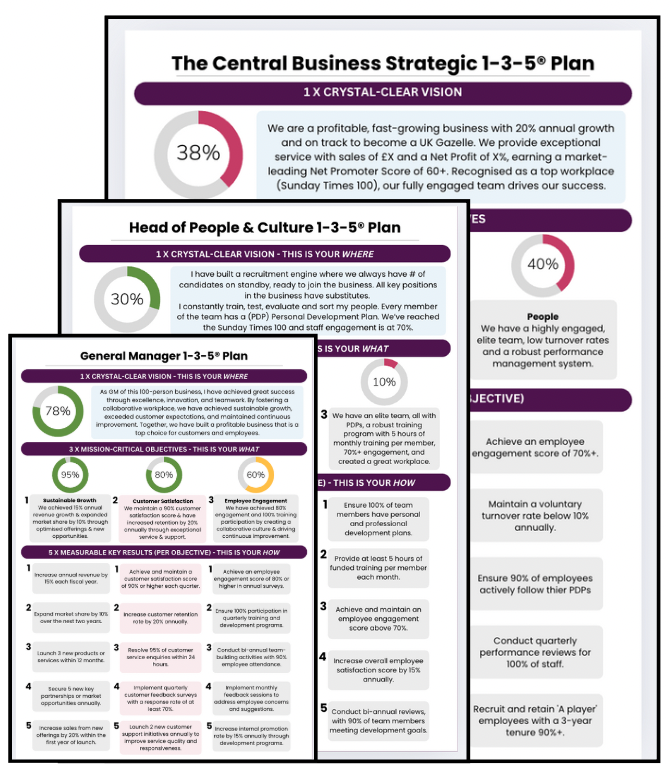
Last updated 9 October 2025 ·

Why KPIs Alone Aren’t Enough
Key Performance Indicators (KPIs) are essential. They tell you whether the business is on track and highlight areas that need attention. But here’s the catch: KPIs on their own don’t build culture. Many businesses track numbers religiously but still struggle with low engagement and weak accountability. Why? Because culture eats metrics for breakfast. A high-performance environment requires more than measurement - it requires meaning.
The Link Between KPIs and Culture
Think of KPIs as the speedometer in a car. They tell you how fast you’re going, but they don’t determine where you’re headed or why you’re driving in the first place. Culture provides the fuel - the shared values, beliefs, and behaviours that keep people engaged and moving in the right direction.
When KPIs are connected to a strong culture, they:
- Reinforce accountability.
- Motivate teams through shared purpose.
- Drive consistent behaviours across the organisation.
Building Culture Around Metrics
Here’s how to ensure KPIs contribute to culture rather than undermine it:
- Start with ‘Why Employees should understand why KPIs matter’ - A target isn’t just a number; it represents progress toward the company’s bigger vision.
- Make Metrics Visible - Transparency builds trust. Dashboards in tools like Reclaro allow everyone to see progress in real time, creating shared ownership.
- Celebrate Progress - Recognise achievements, even partial wins. A team that sees their KPI rising feels motivated to keep pushing.
- Embed Accountability - Tie each KPI to an owner. Responsibility should be clear - not vague or spread too thin.
The Role of OKRs
While KPIs measure outcomes, OKRs provide the context. For example:
- OKR Objective: Improve customer retention.
- Key Results:
- Achieve 90% customer satisfaction.
- Reduce churn to under 5%.
- KPIs Tracked: Customer churn rate, NPS, renewal rates.
OKRs and KPIs together create both focus (what matters most) and culture (why it matters).
Practical Example
Imagine a sales team with a KPI of closing £500k per quarter. On its own, this number can feel like pressure. But linked to a company-wide OKR - “Achieve sustainable growth by expanding into new markets” - it becomes part of a shared mission. The number now reflects progress toward something bigger, motivating the team and strengthening culture.
Conclusion
KPIs are vital, but culture transforms them from numbers into meaning. By connecting metrics to purpose, embedding accountability, and making progress visible, you build a high-performance environment where numbers drive behaviour, and behaviour drives results.
👉 Ready to connect KPIs with culture? Download our OKR templates today or book a call to build a 12-month business plan that creates accountability and culture across your organisation.







